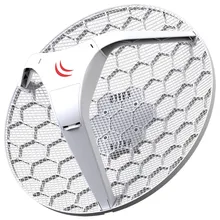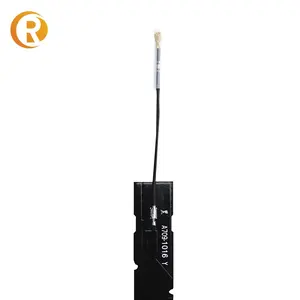A PC Wi-Fi antenna is an important device when seeking to enhance the Wi-Fi range and strength of the computer. By utilizing Wi-Fi antennas, the connection between the internet and the computer can be enhanced. When a signal or network gets absorbed by nearby obstacles, such as metallic surfaces or walls, they are great options that can come to help.
Different types of PC Wi-Fi antennas
Wi-Fi antennas for PCs basically come in two different types: omnidirectional and directional. Omnidirectional Wi-Fi antennas for PCs radiate the signal all around them and just direct the signal to a single specific area. Omnidirectional antennas are easy to set up and utilize, but they cannot offer other additional benefits. An omnidirectional Wi-Fi antenna for PCs can emit a signal that is spherical, similar to a light bulb in a house. Apart from being installed on a PC, they are also good choices for many other situations, such as uncharted places or vehicles. They can also be utilized to broadcast a hotspot from a central place and connect to it while moving around.
A directional Wi-Fi antenna for PCs is an ideal choice for a better Wi-Fi connection because it can minimize outside interference. Directional antennas generally have a lower gain, but their redundancy is greater. They are good at roaming between different cells. A common use for directional antennas is on a mobile adapter or Wi-Fi router. Apart from being used for PCs, directional Wi-Fi antennas can also be utilized as the center antennas of a spoke and hub system. They usually operate at a two to nine dBi gain. There are a variety of types of directional PC Wi-Fi antennas available on the market. Users can select single or dual-band PC Wi-Fi antennas to suit their specific needs.
The method to make a PC Wi-Fi antenna
PC Wi-Fi antennas are usually attached to Wi-Fi cards and can be easily removed, making the antennas easy to lose. If that happens, users can create DIY Wi-Fi antennas for their computers. A useful method is to utilize a paper clip to make the antenna. Users need to prepare a large paper clip, a roll of electrical tape, and an empty Bic ballpoint pen in advance. The paper clip should be two to three inches long. A lighter, scissors, a metric ruler, and wire cutters will also be needed. Firstly, the paper clip should be unfolded into a straight piece of metal. Remember, the paper clip wire should be 2.4 inches long to get a suitable signal. Utilize the ruler to try to get close to the measurement and cut it. Bend the paper clip at about 3/4 inch of one end, and straighten the wire at a ninety-degree angle. It will form the part that installs into the antenna port. Next, users need to remove the ink cartridge from the empty Bic ballpoint pen and clip off about 1/2 to 3/4 inch of the tubing. Slip the cut-off tubing over the bent end and make sure it extends past the paper clip's end by about 1/16 inch. Use a lighter or other heat source to heat the tubing gently until it shrinks and offers a tight fit to the clip. Wrap electrical tape above the paper clip. Lastly, install the tubing end into the connector.










































 浙公网安备 33010002000092号
浙公网安备 33010002000092号 浙B2-20120091-4
浙B2-20120091-4